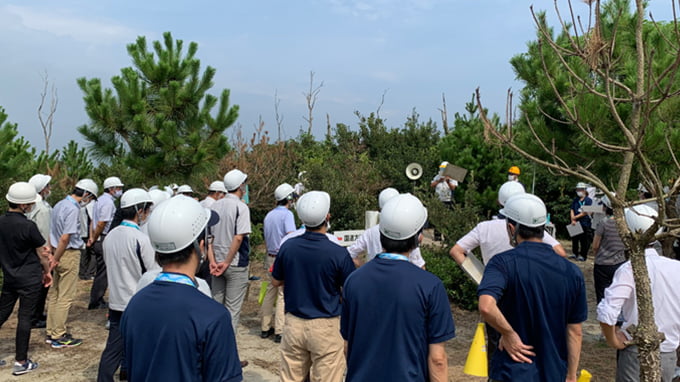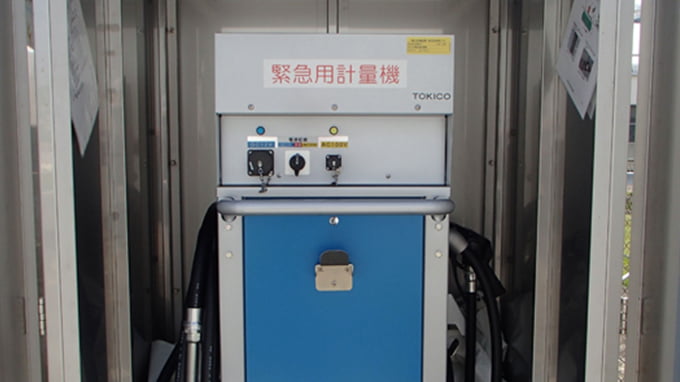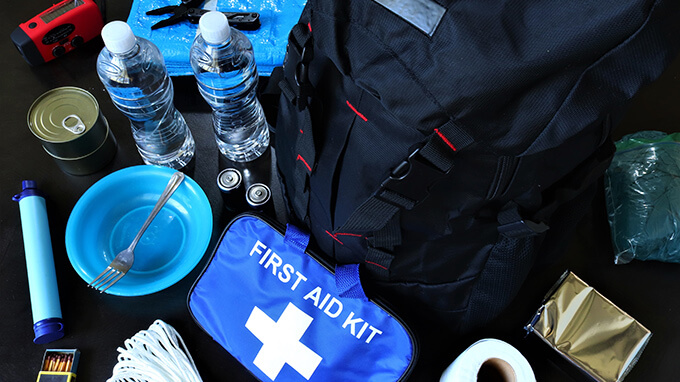- Home
- Sustainability
- Risk management
Risk management
At Cataler, we take appropriate measures for each function against risks that we recognize as requiring countermeasures in order to sustain our business activities. In particular, we recognize the need for countermeasures against natural disasters such as earthquakes, tsunamis and infectious diseases, and information security measures to prevent leakage of technical and personal information, which pose significant risks to our business.

Business Continuity Management (BCM) and Business Management Risk Response
As part of its business continuity management (BCM), Cataler conducts risk assessments by analyzing the business impact of anticipated incidents, clarifying business continuity risks, and identifying necessary resources. The Cataler Business Continuity Plan (C-BCP) * was formulated through these processes. Then, we implement the PDCA cycle to maintain and improve the C-BCP in an appropriate state by taking preliminary measures and conducting drills in accordance with the plan, and evaluating the results of these measures and drills.
Swipe sideways to view the diagram.

Business continuity strategy creation process
The process of determining a contingency response strategy (Cataler Business Continuity Plan: C-BCP), while understanding and assessing the threat posed by an anticipated incident and the risks posed by the resources.
Implementation operation process
Based on the contingency response strategy, measures are systematically implemented to address the risks posed by the resources.
- ・Prepare response plans for each BCM organization as a unit, and emergency response procedures (ERPs) according to roles within the organization.
- ・To continuously improve resource countermeasures and emergency response procedures, annual business continuity objectives are set for each fiscal year, and annual activity plans for each organization are developed to meet these objectives. Based on this, we conduct education and training, identify issues, and promote activities that lead to improvements.
- ・These activities are inspected and corrected by internal and external audits, and the review of top reports is linked to the next action.
Assumed threats
A risk map is used by Cataler to identify threats to business continuity. Threats indicated in red, such as nuclear accidents, major earthquakes and tsunamis, typhoons and torrential rains, infectious diseases, fires and explosions, have a significant impact on management and require an immediate response beyond the boundaries of each department, so we maintain and improve our continuity capabilities through our own business continuity management (C-BCM). On the other hand, threats with a high impact on management and a high frequency of occurrence are recognized as management issues and addressed within the framework of company policy management.
Business continuity risk map

Response to assumed threats
Cataler estimates the risk posed by the assumed threat, and implements "measures to ensure business continuity in the event of an incident". We are committed to being prepared so that we ensure the continued supply of products to our customers, and to contribute to the recovery of local communities with life and safety as our top priority, even in normal times.
A tsunami evacuation area set
by a city agreement

In the event of an emergency, we have made it possible to use the nearby protected forest as a tsunami evacuation facility.
Deployment of
emergency gasoline meters

In view of the acute shortage of petrol in the affected areas, pumping machines were deployed to divert petrol for endurance tests.
Mediated sales of
emergency supplies

Mediated sales of supplies and emergency food to prevent employees from being affected by disasters at home.
Information security
In 2004, the Company established internal regulations related to IT security in order to prevent the leakage of personal information, trade secrets and technical information, as well as to protect information assets and promote safe business activities.
Based on these regulations, both physical and personnel measures are being taken, including the introduction of a system to restrict the taking out of data, operational rules when equipment is brought in from outside the Company, and company-wide education and training to deal with targeted threat email training.


 JAPANESE
JAPANESE

 Select Language
Select Language English
English
Cataler Business Continuity Plan (C-BCP)
The Cataler Business Continuity Plan (C-BCP) defines the processes and resources that will enable us to supply products and mass-produced prototypes to our customers within a specified period of time through early recovery and alternative production at our overseas bases, even if business is interrupted due to an emergency situation. Each affiliated organization follows a specific emergency response procedure (ERP: Emergency Response Procedure) to carry out its mission.